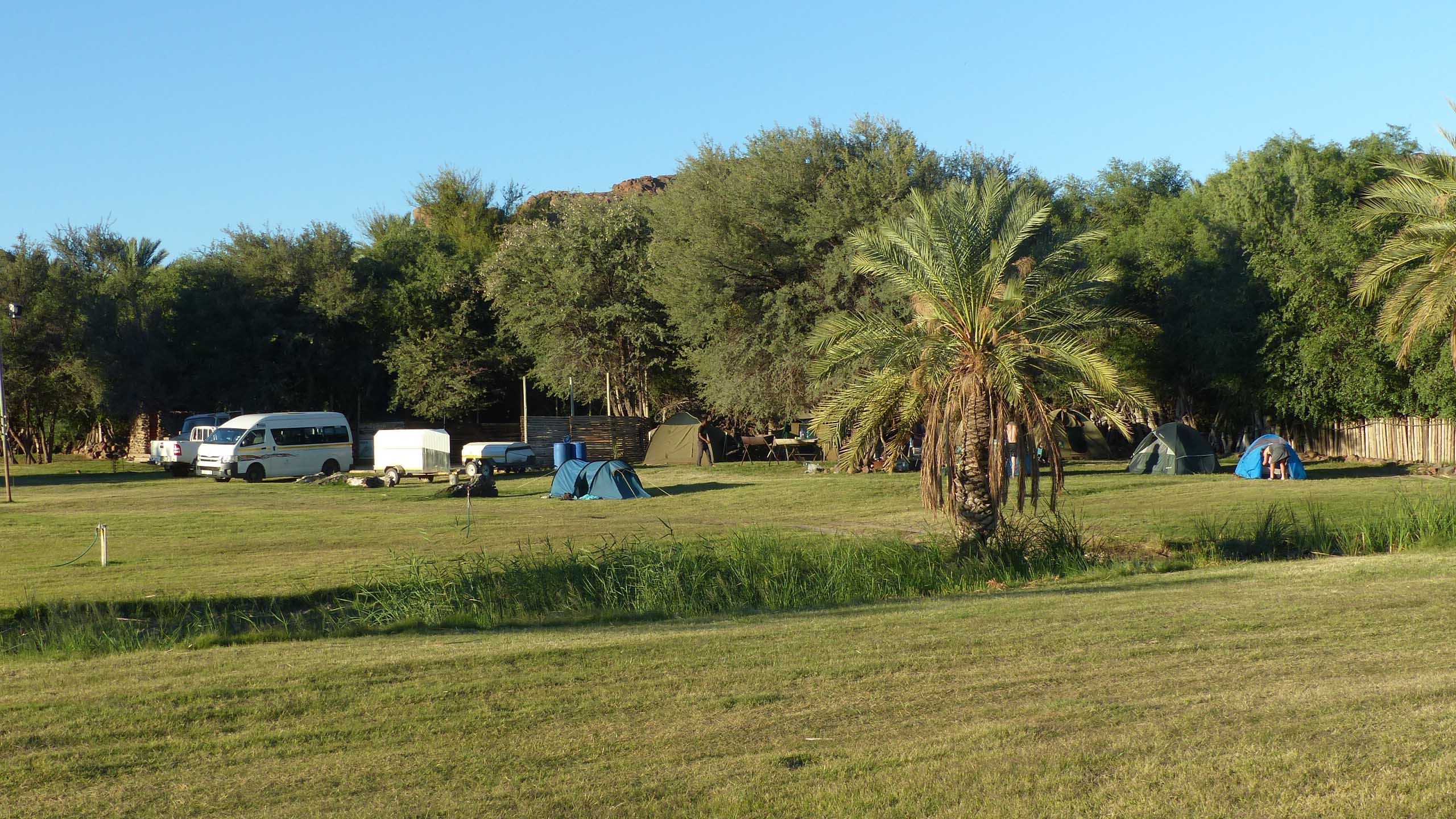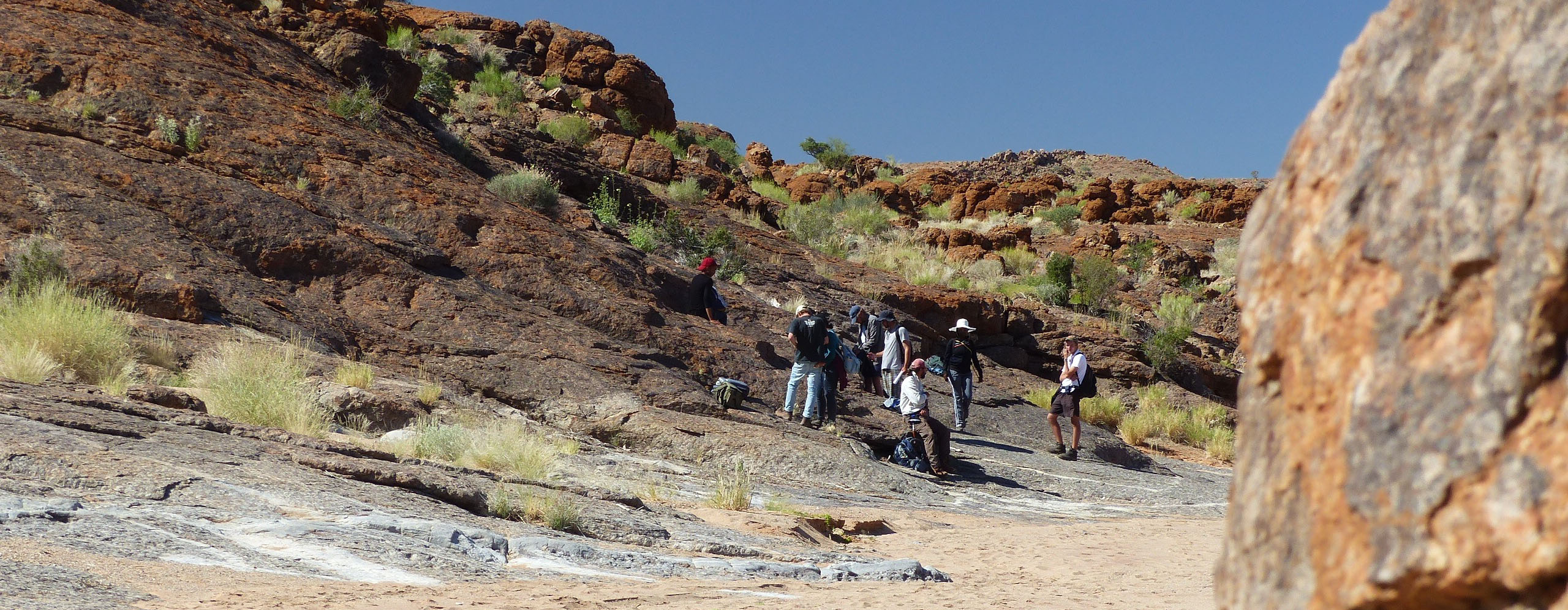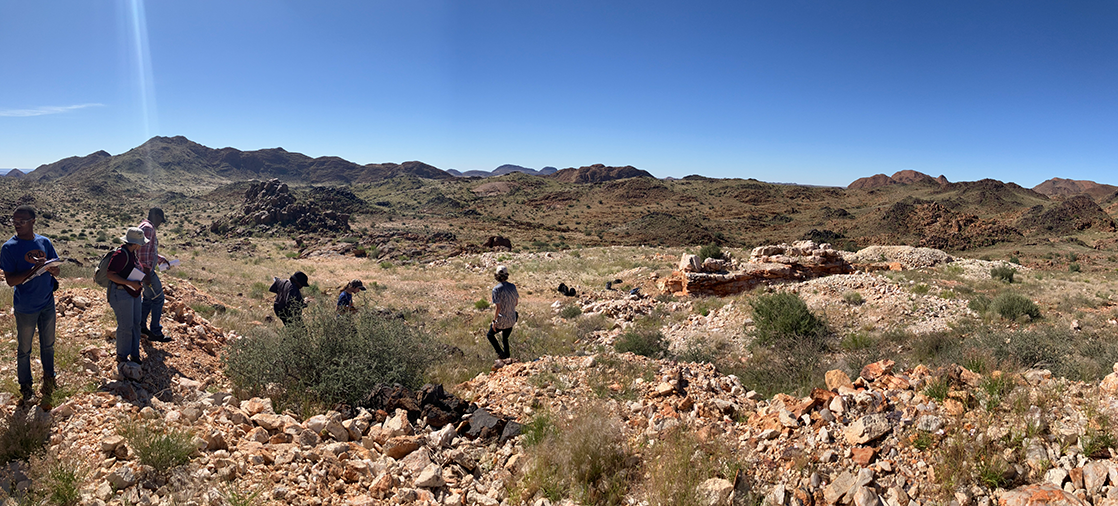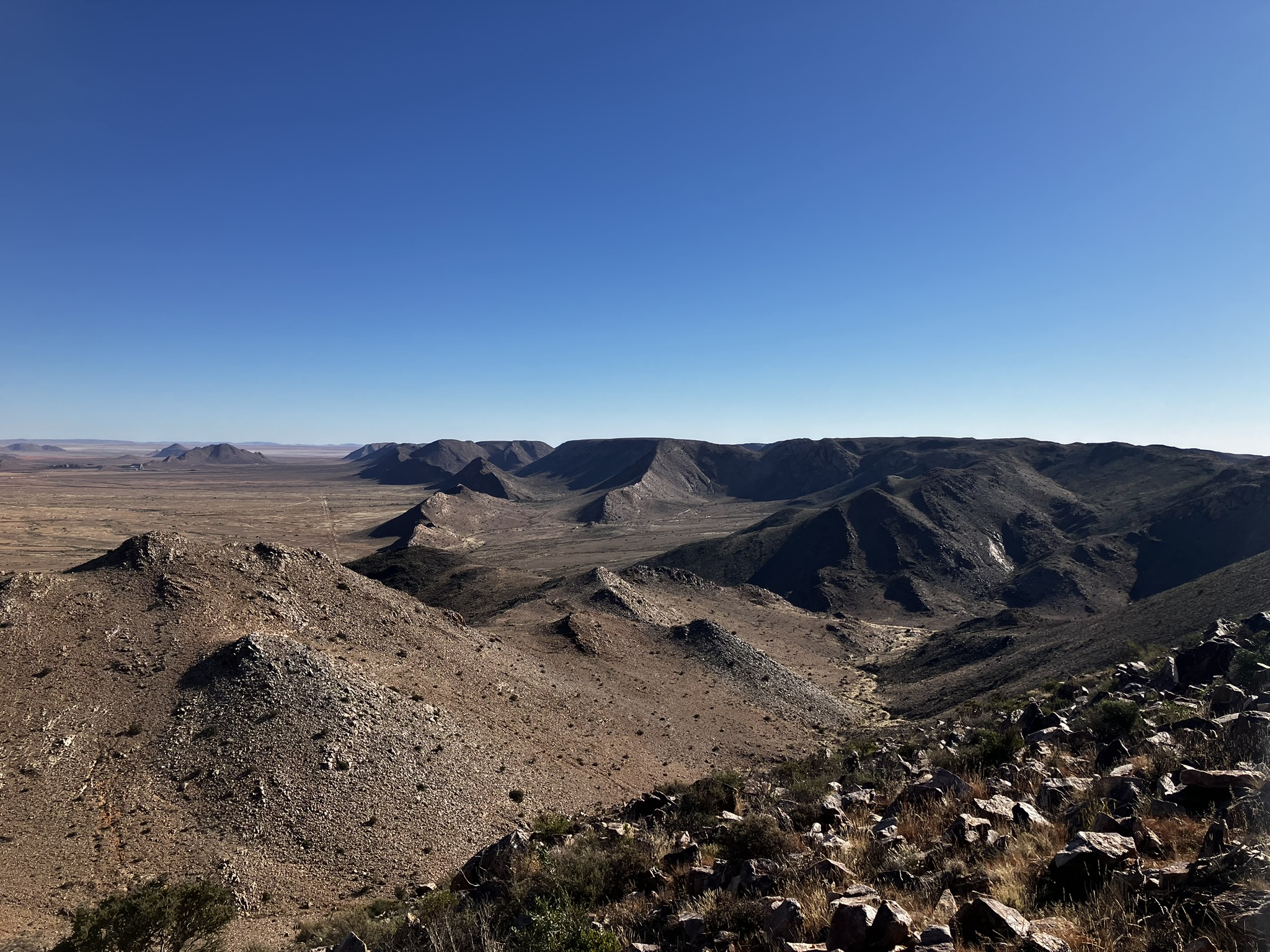Honours Field School
The Honours Field School is a three- to six-week capstone course that aims at connecting the academic education in undergraduate and Honours theory courses with activities in the field. The T&L activities emulate work and the work environment in mineral exploration, as much as this can be done in academic education. Learning activities focus on, but are not limited to, the practical experience of field mapping and analysis. Prof Steffen Büttner manages this course.
The Field School is run in April/May and includes preparation time, a two-week field course in the Western and Northern Cape Provinces, and sufficient time is set aside for subsequent thin section petrography and report preparation.
A significant part of the Field School costs are covered by generous donations from Remote Exploration Services. Without these funds we would not be able to run the field school in its current form and the Department of Geology is very grateful for this support.
The focus of Honours Field School is the development of field skills with emphasis on lithological and structural mapping in areas of 2-5 km2 size and at exposure to map scale. Although lithological and structural maps are part of the final product, the field school aims essentially to develop holisitc descriptive and analytical skills at exposure scale, including the classification and interpretation of rocks and structures in terms of the geological environment in which they have formed. This includes all relevant aspects, from deposition of sediments, metamorphism, anatexis, and deformation and retrogression. We also investigate processes that form base metal ore bodies in the O'okiep and Aggeneys areas, and Li-mineralised pegmatites of the late/post-Namaquan pegmatite belt.

The field camp in the Swartoup Hills
Exercises include mineral identification, petrography, the collection of meaningful structural data using the geological compass, documentation of data and observations in annotated 3D sketches, stereonets, maps and cross sections, and their further assessment in written form. The kinematic analysis and interpretation of shear structures from the brittle field to granulite facies ductile shearing is an important component of the course. In the Northern Cape field areas amphibolite facies metamorphism and deformation allow the estimation of palaeo-temperatures during the metamorphic peak and the regional deformation events. In the greenschist-facies Cape Fold Belt sedimentological features are a relevant field target.
The mapping area in the Aggeneys Hills
Fieldwork is carried out in three different geological environments:
- The Cape Fold Belt, where slates, siltstones and quartzites of the Cape Supergroup underwent folding and thrusting under greenschist facies conditions.
- The lithologically variable amphibolite facies rocks of Bushmanland Group at Aggeneys, which experienced metamorphism, polyphase deformation, and base metal ore body formation during the Namaqua Orogeny between ~1250 and 1000 Ma.
- Metabasites, psammopelitic diatexites, marbles, calc-silicate rocks, granites and magmatic breccias of the Arribees Group in the Swartoup Hills (central Namaqua Belt). This region shows granulite facies metamorphism and deformation at peak and retrograde conditions including high-temperature mylonites and deformation in presence of melt. Li-mineralised pegmatites intruded at the end of the Namaqua orogenic phase. Local pseudotachylyte formed during the Pan-African Orogeny at around 512 Ma.
In addition we may undertake a grid mapping exercise and learn how to collect oriented samples for kinematic analysis and evaluation. The aim of these exercises is the training of fieldwork routines and descriptive and analytical skills that are needed for successful mineral exploration or field-based research in a variety of crustal settings and environments.

Waiting for the dreaded kinematics test in the Twakputs Gneiss
In addition to the mapping exercises the Field School visits a number of geologically important sites in the Namaqua belt such as:
- “Steep structures” associated with mafic and ultramafic mineralised dykes in the O’okiep copper district
- Historic copper mine at Concordia
- Gamsberg zinc deposit
- Gossans associated with the Aggeneys base metal deposit
- Late- to post-Namaquan Li-mineralised pegmatites near Onseepkaans and Kakamas.

Pegmatite mapping in the Swartoup Hills
Student learning is assessed via a number of practical test assignments in the field and via a report that is produced after the return to Makhanda. Reporting the results is an important learning objective for which 10 days of time are allocated. The report is submitted in the format of a professional research paper.
Last Modified: Wed, 04 Jun 2025 12:19:30 SAST

